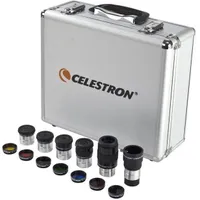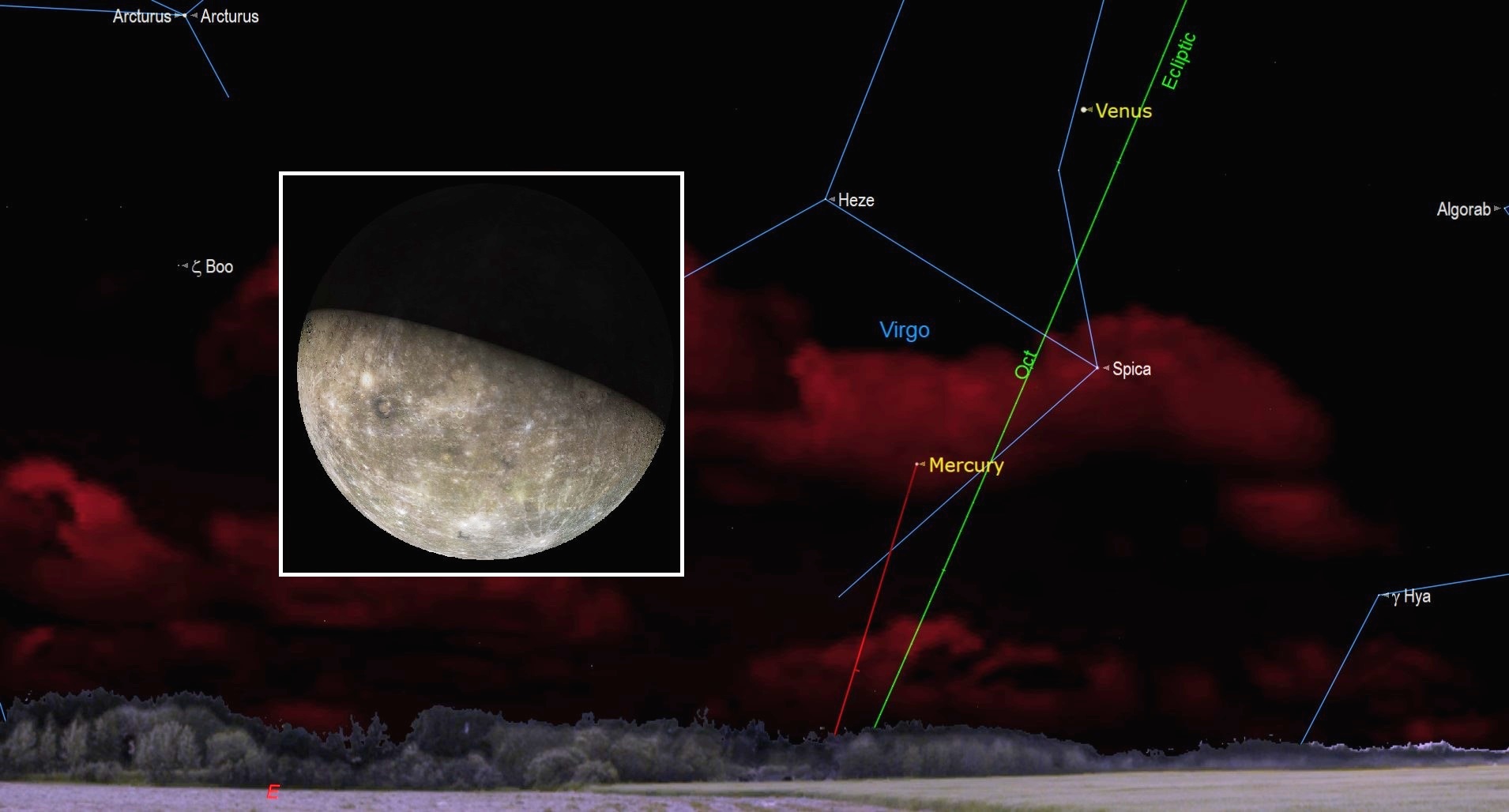See Mercury and Venus in the predawn sky this week
The two "inferior" planets are teaming up with the moon and one of the brightest stars in the sky to put on a lovely show in the predawn morning skies of Thursday and Friday (Nov. 12-13). Planets that move in orbits that are closer to the sun than Earth are "inferior" planets and there are only two, Mercury and Venus.
Venus is, by far, the most brilliant planet and is also the easiest one to see. Mercury on the other hand, is the planet closest to the sun and as such its visibility is more fleeting, partly because it is often hidden in the bright solar glare and also because it usually appears at a rather low altitude relative to the horizon. But this month marks Mercury's finest morning apparition in 2020 and combined with its proximity to Venus, the moon and a bright first-magnitude star, it will be relatively easy to pick out.
Our morning sky show consists of two acts; the curtain rises on Thursday.
Related: How to see the brightest planets in November's night sky
Space.com recommends: Celestron NexStar 6SE | Now $799 at Amazon
Get the very best observations of the moon, Venus and Mercury with the Celestron NexStar 6SE, which boasts user-friendly assembly, fuss-free navigation and superb optics for amazing views of the planets and the rugged lunar surface. The Celestron NexStar 6SE also offers a database of 40,000+ celestial objects for beginners and experienced skywatchers. Supplied with warranty and customer support.
Act 1: Thursday, Nov. 12
On Thursday morning, early risers will be treated to a beautiful array of a brilliant planet, a bright star and a lovely slender crescent moon. The trio will form an eye-catching line in the dawn twilight and will consist of Venus, the bluish star Spica in the constellation Virgo and a waning crescent moon, just 11% illuminated and only three days from new phase.
Shortly after 4:45 a.m. local time, Venus and the moon will appear above the east-southeast horizon. Venus will be shining 7.5 degrees directly below the slender moon; your clenched fist, held at arm's length, measures roughly 10 degrees, so Venus and the moon will be separated by about three-quarters of a fist. About an hour later, Spica twinkles low through the glow of dawn, 6.5 degrees below Venus.
Venus currently rises 70 minutes before the break of dawn, just its nearest rival, Mars, has set in the west. Make no mistake about it, Venus is brilliant as always. About 50 minutes before sunrise all through November, it blazes at least 20 degrees up in the south-southeast. But although Venus is by far the brightest planet once it gets clear of the horizon hazes, it is not nearly as "showy" as it was late last summer when it was higher and brighter.
Breaking space news, the latest updates on rocket launches, skywatching events and more!
Venus is now several months past its greatest elongation and is retreating around the far side of the sun, so a telescope will show it gibbous and small. After its brief "moonlight tryst" with our natural satellite on Thursday morning, naked eye observers will enjoy watching Venus go by Spica during the following week. On the mornings of Nov. 16 and Nov. 17 Venus is slightly less than 4-degrees from Spica, passing above and to its left. Of course, Venus will be far more brilliant than Spica, outshining that star by nearly 100-fold.
And here too will be a fine finish to those who are conducting early morning vigils for the Leonid meteors.
In the weeks to come, Venus will continue to get progressively lower in the morning sky. It will still be fairly prominent through the end of this year, but will rapidly fall into the sunrise fires by the end of January or early February, so enjoy it now while it still blazes in our early morning sky.
Space.com recommends: Celestron 1.25” eyepiece and filter accessory kit | Save 14% | Now $159.99 at Amazon
Celestron’s range of superior-grade Plössl eyepieces and colored filters enhance your observing experience by magnifying and bringing out the surface detail of solar system targets. Use the Moon Filter for excellent contrast of lunar seas and craters, #80A Blue for atmospheric bands on Venus or #21 Orange for impressive sights of the swift planet Mercury. Comes with a sturdy carry case.
Act 2: Friday, Nov. 13
Early on this morning, around 6 a.m. local time, looking low toward the east-southeast horizon, the moon, now just two days from new phase, will appear decidedly narrower compared to 24 hours earlier. And once you sight it, take note of Venus nearly 8 degrees to its upper right and Spica almost 7 degrees to its right. And situated about 5.5 degrees directly below the moon is a very bright "star" glowing with a slight ochre hue.
Except what you're looking at is not a star, but the innermost planet: Mercury.
As was noted from the onset, Mercury always appears from our Earthly vantage point to be in the same general direction as the sun. Thus, relatively few people have set eyes on it; there is even a story — possibly apocryphal — that the great Polish astronomer Copernicus never saw it!
Yet, as you will see for yourself at least on this morning, it's not really hard to see at all. You simply must know when and where to look, and find a clear, unobstructed horizon. And during these next ten days we will be presented with an excellent opportunity to view Mercury in the early morning dawn sky.
Mercury was very near to the sun at inferior conjunction on Oct. 25. In its orbit, Mercury crossed to the north side of the ecliptic three days later (a boon to Northern Hemisphere observers) and reached perihelion — its closest point to the sun — on Nov. 2, when its angular motion around the sun is greatest. This combination of geometries is what suddenly brought this speedy planet into view in the morning sky.
In fact, if you've been an early riser, it's quite possible you might have stumbled across Mercury on your own. Since Nov. 6, it has been rising at least 90 minutes before sunrise, which is also just about the same time that morning twilight is beginning. If you scan low along the east-southeast horizon about 45 minutes before sunrise, Mercury has been visible as a distinctly bright, yellowish-orange "star." The very best views of Mercury, however, are taking place right now as it is currently rising some 100 minutes before the sun. This is even before the break of dawn, so for a short while at least, Mercury will be visible against a completely dark sky.
Its greatest western elongation — or greatest angular distance from the sun in the sky — occurred on the morning of Nov. 10, with Mercury standing 19 degrees from the sun. Mercury, like Venus, appears to go through phases like the moon. Soon after it moved into the morning sky, Mercury was just a skinny crescent. Currently it appears roughly two-thirds illuminated, a gibbous phase, and the amount of its surface illuminated by the sun will continue to increase in the days to come. The phases are best viewed by aiming a telescope at Mercury and tracking it through sunrise, to bring the planet higher in the sky.
So, although it has begun to turn back toward the sun's vicinity, it will brighten a bit more, which should help keep it in easy view until around Nov. 24.
On that morning, Mercury will have increased in brightness to magnitude –0.8; among the stars Canopus is slightly fainter than this and Sirius, brightest of all stars, is brighter. And Mercury should still be relatively easy to find, low in the east-southeast sky about 45 minutes before sunrise, just a couple of days before Thanksgiving. Thereafter, it will drop more rapidly into the bright morning twilight and disappears before the end of the month.
Joe Rao serves as an instructor and guest lecturer at New York's Hayden Planetarium. He writes about astronomy for Natural History magazine, the Farmers' Almanac and other publications. Follow us on Twitter @Spacedotcom and on Facebook.

Joe Rao is Space.com's skywatching columnist, as well as a veteran meteorologist and eclipse chaser who also serves as an instructor and guest lecturer at New York's Hayden Planetarium. He writes about astronomy for Natural History magazine, Sky & Telescope and other publications. Joe is an 8-time Emmy-nominated meteorologist who served the Putnam Valley region of New York for over 21 years. You can find him on Twitter and YouTube tracking lunar and solar eclipses, meteor showers and more. To find out Joe's latest project, visit him on Twitter.







